Are you having trouble finding the ideal room temperature for kittens?
Don’t worry; you have come to the right place.
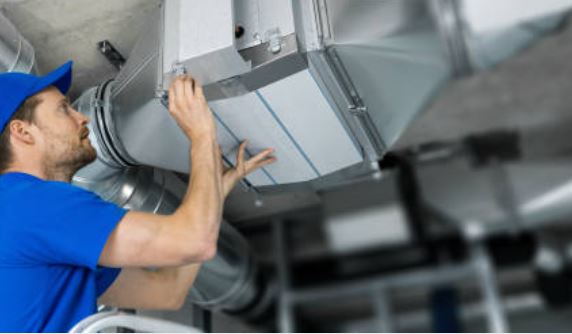
call 661-888-0248
Contact us 24/7 for HVAC services!
Kittens are fragile, much like human babies. Therefore, as a cat owner, you need to do everything you can to help retain their body heat.
If a kitten keeps on losing its body heat, it can experience stunted growth. And in some cases, extreme temperatures can result in fatalities. Therefore, you must master the trick of setting your thermostat right for your kittens’ safety and comfort.
Come along as we look at everything “ideal room temperature for kittens”.
Let’s go.
What is the ideal room temperature for newborn kittens?
Like dogs, cats are also warm-blooded creatures. This means that adult cats can sustain and control their body temperature.
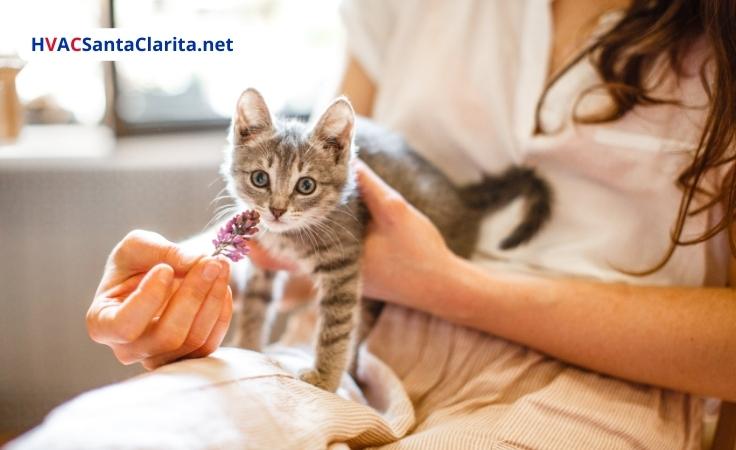
Note: A healthy cat’s average body temperature is 101 to 102.5 degrees Fahrenheit.
Kittens, on the other hand, are unable to control their body temperatures. A newborn kitten’s temperature will be 95-97 degrees, rising to 100 degrees over week one.
Hence, offering a mild heat source (such as a heating pad) is vital to keep the cat cool during this period.
The kitten’s habitat (especially the whelping box) should be between 85 and 90 degrees.
A significant drop in your kitten’s body temperature can affect its digestion and the growth of its immune system.
In short, maintaining an optimal indoor temperature is critical for the development of your feline friend.
How critical is room temperature for newborn kittens?
The room temperature is not that critical if the kittens stay close to their mother. The mature cat will supply the kittens with the required warmth.

However, that’s not usually the case. The kittens might be adopted, which makes it difficult for the kittens.
Also, the mother can run an errand or relieve herself even if she’s around. Therefore, this is
Using your air conditioning to achieve the ideal temperature for cats comes in.
For your kitten’s first month, here is the ideal room temperature:
- The thermostat setting should be roughly 85 to 90 degrees Fahrenheit during week one.
- You can steadily reduce the temperature to 80 degrees from week two onward.
- As the month concludes, maintain a steady temperature of approximately 72 degrees Fahrenheit.
Your kitten’s conduct will reveal whether or not they are content. If they are satisfied and
healthy, they will remain calm and gain weight.
Constant wailing and restlessness mainly indicate discomfort.
Note: By cuddling together, kittens share their body heat. Therefore, you need to be more careful with kittens in tiny groups or those alone.
Ideal House Temperature for Kittens 8 to 12 Weeks Old
It is easy for kittens to thrive after they start well. After two months, your indoor cats will be OK if you maintain a room temperature of 72 degrees Fahrenheit.
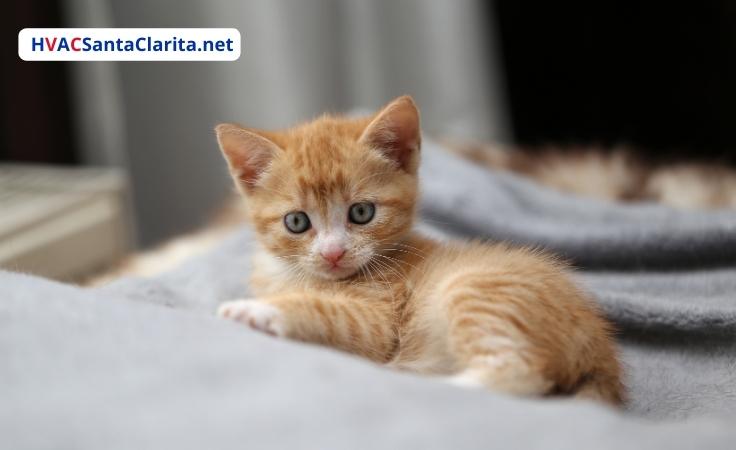
A slight increase or decrease in room temperature will depend on your comfort. If you are comfortable, your kitties will be comfortable as well.
Remember: Kittens are notorious for hiding their suffering. As a result, you’ll need to be more vigilant to spot these tiny cues that your cat’s body temperature is too hot or too cold.
How to Keep Your Kittens Comfortable While You Are Away
Despite their extra fur coats, kittens still get cold in cold weather. And, like people, they will not react well to sudden temperature fluctuations.
So, leave the thermostat at its current setting while leaving the house. This will make your kitties feel comfortable.
If you lower your air conditioning temperature when leaving, don’t go below 60 degrees Fahrenheit(1).
Tips for Maintaining an Ideal Room Temp for Kittens
Your kittens don’t need you to heat the entire room for them to be comfortable. Warming the whelping box and the surrounding area will work great. Why only the whelping box?
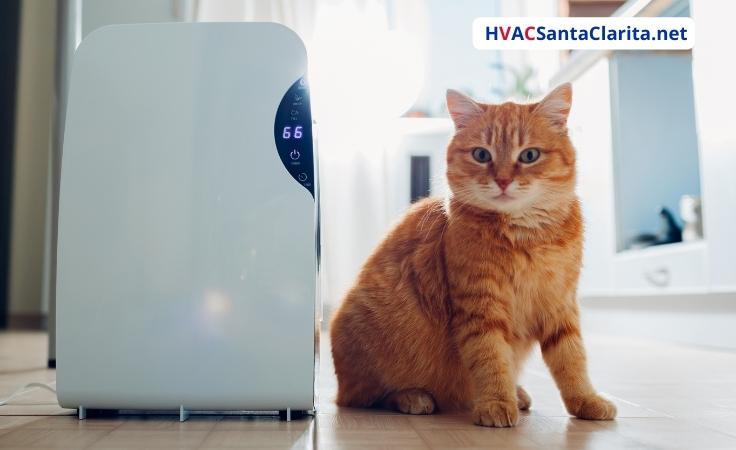
Kittens do not move much in their first few months. However, to provide premium comfort for your kitties, you could also:
- Use a programmable thermostat. It allows you to adjust the ductless mini-split automatically. Additionally, a programmable thermostat will enable you to maintain a comfortable temperature for your kitty while using very little electricity.
- Give the electric heating pads a try. However, select one that’s specifically designed for pets.
- You may also use microwave-warmed re-heatable pads.
- For slightly aged kittens primed to transition away from their littermates and mothers, a warmed bed with a heartbeat pillow can help imitate the feel and sounds of home.
- When the kittens are old enough, consider a comfortable knitted pet bed with a charming mother’s Heartbeat cushion.
Factors for a Kitten’s Adaptability to Temperature
These factors will help you determine how high or low to set your thermostat when you step out.
Breed
Cat breeds with thicker coats feel uneasy as the temperature rises. If you reside in a tropical area or during the summer, you’ll need to keep an eye on them. Remember that if it’s warm for you, it’s almost undoubtedly warm for them.
Age
Younger cats require more heat than older adults because they retain less heat. In the whelping box, you can keep a few blankets nearby so the kittens can stay warm during the night.
Size
The rule of thumb is usually that the larger the kitten, the better they are at retaining heat. Thus, overweight kittens will thrive in cooler habitats than in warmer ones.
Health
Sick cats, like people, demand warmer settings for comfort. Consider turning up the heat if your kitten isn’t doing well. If your AC is not okay, and your cat falls sick, you will have to contact emergency AC service.
Signs Your Kitten Is Too Hot
Your kitten will exhibit the signs below if it’s too hot:

- Red gums: This is a sign of overheating.
- Normal panting by your kitten is more worrisome. This is because they are different from dogs, who pant to cool down. If you see your kitten panting, it is struggling to cool down or dangerously overheating.
- Sluggish behavior: Your kitten could be too hot if it’s sluggish or slower than usual.
- Weird gait and movement: If your kitten walks wobbly or stumbles, it may be overheating.
- Vomit and diarrhea: If your kitten has diarrhea or is vomiting, seek veterinary attention ASAP. At this stage, your kitten is likely battling heatstroke.
Signs Your Kitten Is Too Cold
Your kitten will exhibit the signs below if it’s too cold:
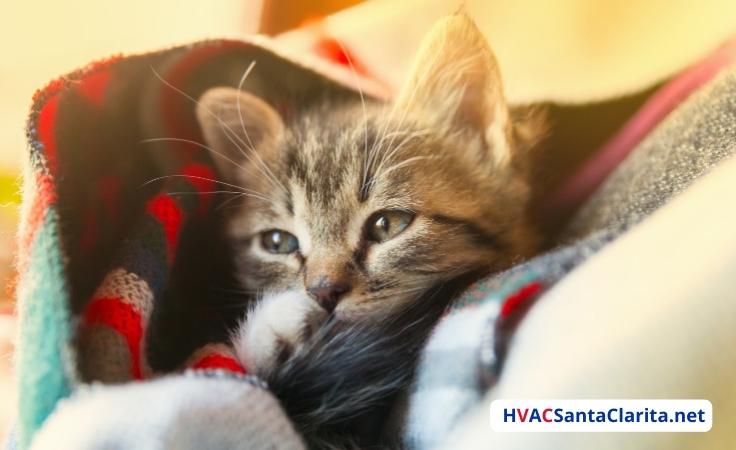
- Your kitten is having problems maintaining its body temperature if its ears and tail feel cold.
- If your kitten is burrowing under cushions and blankets or constantly hiding out in warmer areas, it’s likely your home temperature is too cold.
- When a kitten feels cold, it compresses its body by curling up tightly and pulling its paws beneath its body. The kitten can keep warm and conserve energy by adopting this posture.
- If your kitten regularly seeks out sunny areas near the windows, there’s a possibility that it’s feeling cold.
Is it better for kittens to be too warm or too cold?
The goal is to maintain a comfortable temperature for your cat throughout the year. Many people ask if cats are more vulnerable in the winter or the summer. Cats generally find it simpler to warm up than to cool down.
This implies that maintaining your home’s temperature is more critical in the summer than in the winter. If your cat is feeling cold in the winter, they have more opportunities to warm up.
This means that your air conditioner must be in perfect condition throughout the entire summer. Remember, unlike humans, a cat cannot simply remove its coat to cool off when overheated.
The best way to ensure a perfectly working AC is to schedule AC maintenance before the onset of summer. AC maintenance Santa Clarita has got you covered in this.
Furthermore, overheating might be more dangerous to a cat’s health than underheating. Cats are far less susceptible to hypothermia than they are to heatstroke.
A programmable thermostat, coupled with the tips mentioned above, can prevent heatstroke among your kittens.
Frequently Asked Questions on Ideal Room Temperature for Kittens
We answer some frequently asked questions concerning AC temperature for cats and kittens. We hope this helps you keep your pets comfortable throughout the year.
What is room temperature too cold for a kitten?
Generally, anything less than 45 degrees Fahrenheit is deemed too cold. Typically, we recommend that you never lower the temperature below 60°F, as it can be uncomfortable for cats and kittens. However, temperatures below 45 degrees can be risky and fatal for your kittens.
What temperature is too hot for kittens?
A temperature of 97 degrees Fahrenheit is too hot for your kittens. Your kitten should always be kept indoors, preferably with air conditioning, if the outdoor temperature reaches above 80 degrees.
When can a kitten regulate its temperature?
When the kitties are around three weeks old, you can lower the whelping box temperature to roughly 80 degrees Fahrenheit. However, they should be able to regulate their body temperatures after five weeks. They are usually more resistant to the ambient indoor temperature at this stage.
How do you keep newborn kittens warm?
We recommend a ductless mini-split system and a heat pump to provide your pets with the ideal room temperature. This will keep your cats comfortable without increasing your energy bills.
Final Thoughts on Ideal Room Temperature for Kittens
Getting a running air conditioner and a programmable thermostat is a great first step to achieve total comfort for your kittens.
Your cat will show significant improvement in controlling its body temperature within two months. But first, you must be hands-on and ensure everything is in order when they are younger. For expert advice on setting the ideal equipment for your kittens’ and pets’ warming, feel free to search for “AC companies near me”. This should match you with your local HVAC technician.

call 661-888-0248
Contact us 24/7 for HVAC services!
Sources
https://cats.lovetoknow.com/Newborn_Kittens
